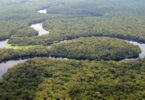As the planet warms, the effects of climate change stretch far beyond rising sea levels and extreme weather events. A hidden, more severe threat is emerging: the rapid spread of infectious illnesses.
From tropical illnesses spreading to once-cool regions, to ancient pathogens reawakening from melting ice, climate change is creating the perfect storm for global health crises. Let’s dive into how this is happening and why it matters for all of us.
Warming Temperatures: A Welcome Mat for Disease Vectors
Rising temperatures might feel like a mild inconvenience, but for disease-carrying insects like mosquitoes and ticks, it’s an invitation to thrive.
- Increased mosquito activity is leading to the spread of malaria, dengue fever, and Zika virus in areas once considered too cold.
- Ticks—which spread Lyme disease—are expanding their territory, moving into higher latitudes and altitudes where they can infect new populations.
Fact: Higher temperatures lead to longer breeding seasons for mosquitoes, causing infections to spike.
Shifting Rainfall Patterns: Waterborne Diseases on the Rise
Erratic rainfall patterns are another side effect of climate change, and with them come waterborne illnesses.
- Flooding from heavy rains contaminates water supplies, leading to outbreaks of cholera and typhoid.
- Stagnant water post-floods becomes breeding grounds for mosquitoes, contributing to malaria and dengue outbreaks.
- On the flip side, droughts push people to unsafe water sources, increasing the risk of diseases like leptospirosis.
Fact: 70% of the world’s disease outbreaks are water-related.
Melting Permafrost: Ancient Pathogens Return
Melting permafrost in the Arctic isn’t just releasing ancient fossils—it’s also unearthing dormant viruses and bacteria.
- In 2016, anthrax spores from a 75-year-old reindeer carcass were released due to thawing permafrost, causing an outbreak in Siberia.
- As ice melts, pathogens that haven’t been in contact with humans for thousands of years could become the next health crisis.
Fact: Some scientists warn that permafrost melt could unlock pandemics from ancient diseases.
Human and Animal Migration: Zoonotic Diseases on the Rise
As climate change destroys habitats, animals and humans are forced into closer contact. This increases the risk of zoonotic diseases—those that jump from animals to humans.
- Outbreaks like Ebola, SARS, and COVID-19 are all tied to zoonotic transmission.
- With climate-related habitat loss, the risk of new zoonotic pandemics is growing.
Fact: 75% of emerging infectious diseases are zoonotic in origin.
Weakening Health Systems: A Silent Crisis
In regions hardest hit by climate change, health systems are often underfunded and overwhelmed. Natural disasters like floods and droughts not only strain these systems but also make it difficult to combat outbreaks effectively.
- Poor infrastructure and sanitation after disasters create ideal conditions for diseases to spread.
- Overcrowded shelters and limited medical supplies worsen the situation, making it harder to control epidemics.
Fact: The WHO estimates that climate change could cause an additional 250,000 deaths per year between 2030 and 2050 due to health-related crises.
Conclusion: It’s Time to Act
Climate change is more than just an environmental issue—it’s a global health emergency. As temperatures rise and ecosystems change, so do the patterns of disease. The link between climate change and infectious diseases is clear, and the time to take action is now.
- Support climate initiatives to reduce greenhouse gas emissions.
- Advocate for stronger health systems that can withstand climate-induced pressures.
- Stay informed about how these changes affect global health and the steps you can take to protect yourself and your community.








